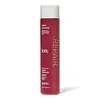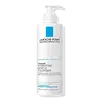What's inside
What's inside
 Key Ingredients
Key Ingredients

 Benefits
Benefits

 Concerns
Concerns

 Ingredients Side-by-side
Ingredients Side-by-side

Water
Skin ConditioningSodium Laureth Sulfate
CleansingCocamidopropyl Betaine
CleansingGlycol Distearate
EmollientPhenoxyethanol
PreservativeParfum
MaskingLaureth-4
EmulsifyingPolyquaternium-10
Sodium Chloride
MaskingSodium Benzoate
MaskingPolyquaternium-7
Ethylhexylglycerin
Skin ConditioningGuar Hydroxypropyltrimonium Chloride
Skin ConditioningLaureth-2
CleansingPEG/PPG-120/10 Trimethylolpropane Trioleate
Lactic Acid
BufferingLinalool
PerfumingDimethicone PEG-8 Meadowfoamate
EmollientTocopheryl Acetate
AntioxidantPanthenol
Skin ConditioningPropylene Glycol
HumectantHydrolyzed Quinoa
Skin ConditioningPotassium Sorbate
PreservativeWater, Sodium Laureth Sulfate, Cocamidopropyl Betaine, Glycol Distearate, Phenoxyethanol, Parfum, Laureth-4, Polyquaternium-10, Sodium Chloride, Sodium Benzoate, Polyquaternium-7, Ethylhexylglycerin, Guar Hydroxypropyltrimonium Chloride, Laureth-2, PEG/PPG-120/10 Trimethylolpropane Trioleate, Lactic Acid, Linalool, Dimethicone PEG-8 Meadowfoamate, Tocopheryl Acetate, Panthenol, Propylene Glycol, Hydrolyzed Quinoa, Potassium Sorbate
 Reviews
Reviews

Ingredients Explained
These ingredients are found in both products.
Ingredients higher up in an ingredient list are typically present in a larger amount.
Panthenol is a common ingredient that helps hydrate and soothe the skin. It is found naturally in our skin and hair.
There are two forms of panthenol: D and L.
D-panthenol is also known as dexpanthenol. Most cosmetics use dexpanthenol or a mixture of D and L-panthenol.
Panthenol is famous due to its ability to go deeper into the skin's layers. Using this ingredient has numerous pros (and no cons):
Like hyaluronic acid, panthenol is a humectant. Humectants are able to bind and hold large amounts of water to keep skin hydrated.
This ingredient works well for wound healing. It works by increasing tissue in the wound and helps close open wounds.
Once oxidized, panthenol converts to pantothenic acid. Panthothenic acid is found in all living cells.
This ingredient is also referred to as pro-vitamin B5.
Learn more about PanthenolPropylene Glycol is an odorless, colorless liquid. As a humectant, it helps skin retain moisture. It also aids in delivering active ingredients.
Another role of this ingredient is preventing a product from melting or freezing. Propylene glycol also adds antimicrobrial properties to a product, elongating product lifespan.
This ingredient is considered an organic alcohol and commonly added into both cosmetics and foods.
Those with sensitive skin or conditions may develop a rash when using this ingredient.
Learn more about Propylene GlycolChances are, you eat sodium chloride every day. Sodium Chloride is also known as table salt.
This ingredient has many purposes in skincare: thickener, emulsifier, and exfoliator.
You'll most likely find this ingredient in cleansers where it is used to create a gel-like texture. As an emulsifier, it also prevents ingredients from separating.
There is much debate on whether this ingredient is comedogenic. The short answer - comedogenic ratings don't tell the whole story. Learn more about comegodenic ratings here.
The concensus about this ingredient causing acne seems to be divided. Research is needed to understand if this ingredient does cause acne.
Scrubs may use salt as the primary exfoliating ingredient.
Learn more about Sodium ChlorideWater. It's the most common cosmetic ingredient of all. You'll usually see it at the top of ingredient lists, meaning that it makes up the largest part of the product.
So why is it so popular? Water most often acts as a solvent - this means that it helps dissolve other ingredients into the formulation.
You'll also recognize water as that liquid we all need to stay alive. If you see this, drink a glass of water. Stay hydrated!
Learn more about Water